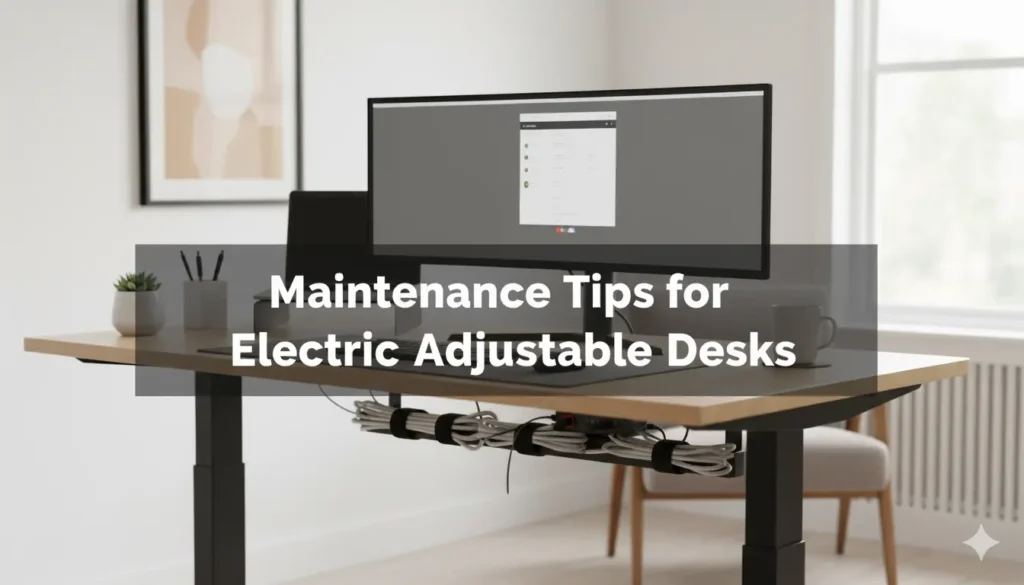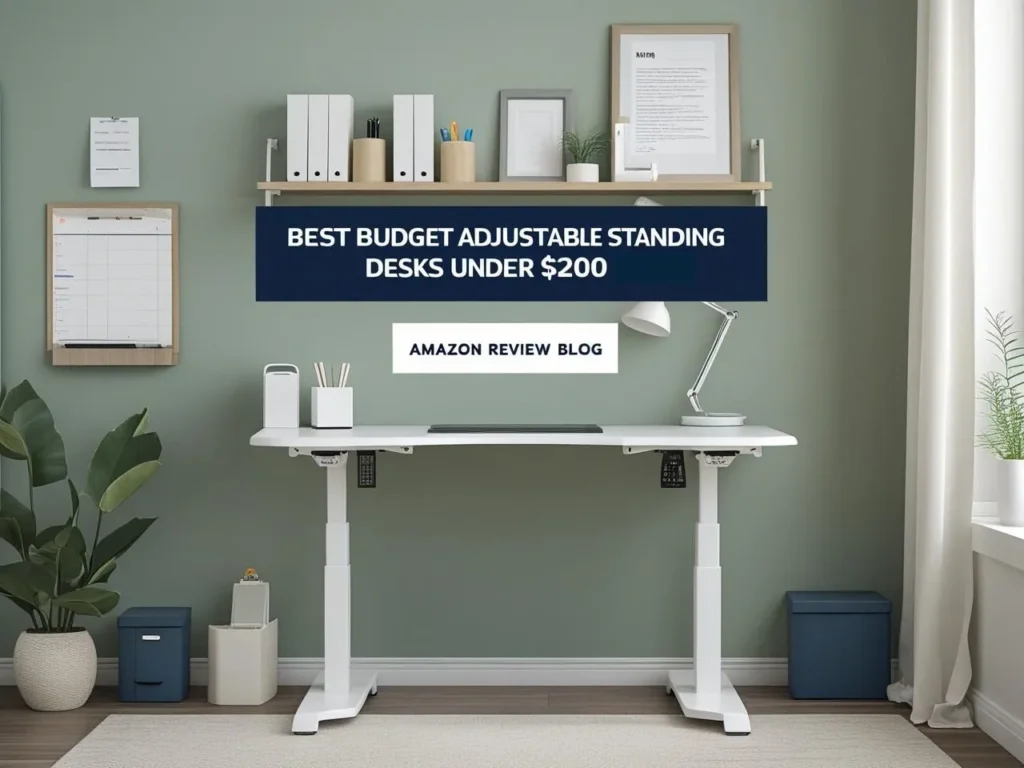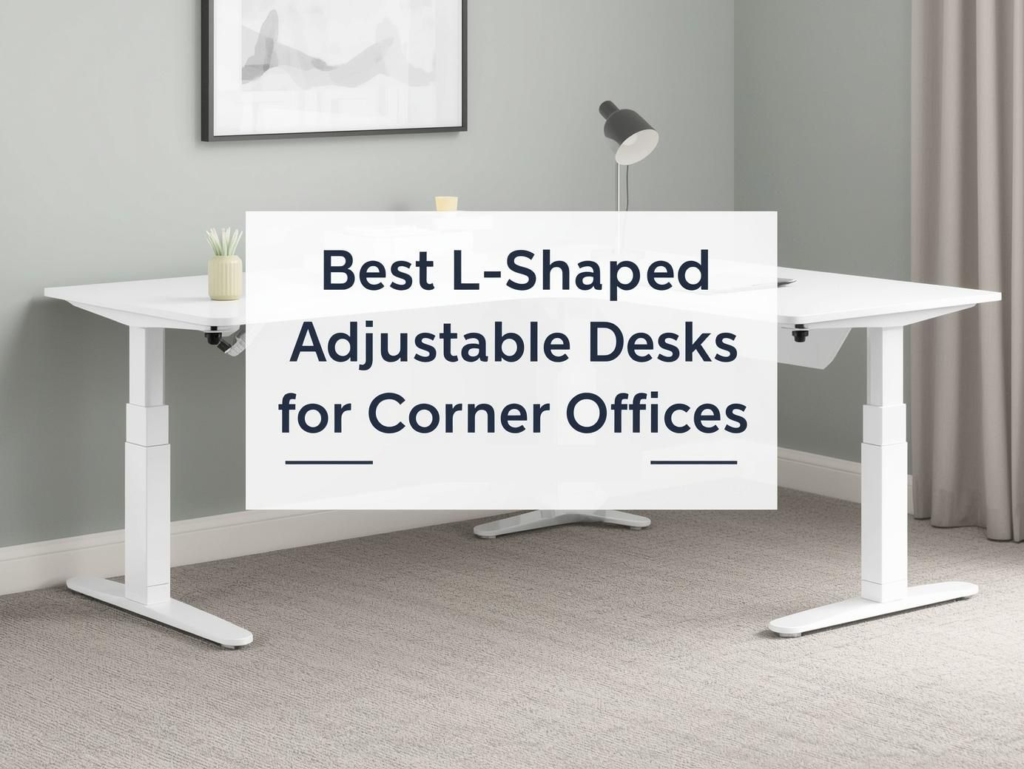Okay, so here’s the thing about electric adjustable desks—they’re absolutely amazing until they’re not. I remember getting mine about three years ago, and honestly? I was that person who thought it would just work forever without any care. Boy, was I wrong.
It all started with this weird clicking sound every time I’d switch from sitting to standing. At first, I ignored it (classic mistake, right?). Then one Tuesday morning, my desk just… stopped. Completely. I’m sitting there with my coffee, trying to raise it for my usual 10 AM standing session, and nothing. The motor made this pathetic whirring sound, and that was it.
Turns out, I’d been treating my desk like some indestructible piece of furniture when really, it’s more like a piece of equipment that needs regular attention. After a slightly embarrassing call to customer service and some trial-and-error troubleshooting, I learned that taking care of these things isn’t rocket science—but it’s definitely necessary.
So if you’ve got one of those sleek adjustable standing desks or you’re thinking about getting one, stick around. I’m going to share everything I wish someone had told me from day one about keeping these things running smoothly.
Table of Contents
The Stuff Nobody Tells You About Daily Desk Care
Look, I’m not going to sugarcoat this—most of us are terrible at equipment maintenance. We’ll spend $179 on a electric adjustable desk and then treat it like that old wooden table we had in college. But here’s what I’ve learned after way too many “why isn’t this working?” moments.

Dust is Your Desk’s Worst Enemy
I used to think dust was just an aesthetic problem. Wrong! That innocent-looking layer of dust? It’s basically sandpaper for your desk’s moving parts. I found this out the hard way when my desk started sounding like it was grinding coffee beans every time I adjusted it.
Now I’ve got this super simple routine that takes maybe two minutes:
Every few days: I grab this microfiber cloth I keep in my top drawer (nothing fancy, just one of those cheap packs from the grocery store) and give the whole thing a quick wipe-down. The desktop, the legs, even those little crevices where dust loves to hide.
Once a week: I actually move my stuff off the desk and do a proper cleaning. Mild soap, warm water, that’s it. No fancy chemicals needed.
Here’s a weird tip that actually works—I use one of those soft paintbrushes (you know, the kind kids use for art projects) to get dust out of the tight spots around the motor housing. Sounds silly, but it’s way more effective than trying to cram a cloth into those spaces.
The Weight Thing Everyone Ignores
Okay, confession time. I definitely overloaded my desk for probably the first year I had it. Multiple monitors, a printer, stacks of books, my coffee station setup—I basically treated it like a storage unit with legs.
Most desks can handle somewhere between 150-300 pounds, but here’s what they don’t tell you: that includes everything. Your laptop, your monitors, that stack of notebooks you never use, your coffee mug collection, everything.
I actually started weighing my stuff after my desk began struggling to go up. Turns out I was at about 320 pounds total. No wonder the poor thing was having issues! Now I keep a mental tally, and honestly, it’s made me more organized too. Win-win.
Water and Electronics Don’t Play Nice
This should be obvious, but apparently it wasn’t obvious to me at 7 AM on a Monday. I knocked over a full glass of water right onto my control panel. Thankfully, nothing major happened, but those few seconds of panic were enough to teach me a valuable lesson.
Now I have this rule—all drinks stay on the left side of my desk (away from the controls), and they all get coasters. Yes, I’m that person now. But you know what? My desk still works perfectly, so I’m okay with being the coaster police in my own office.
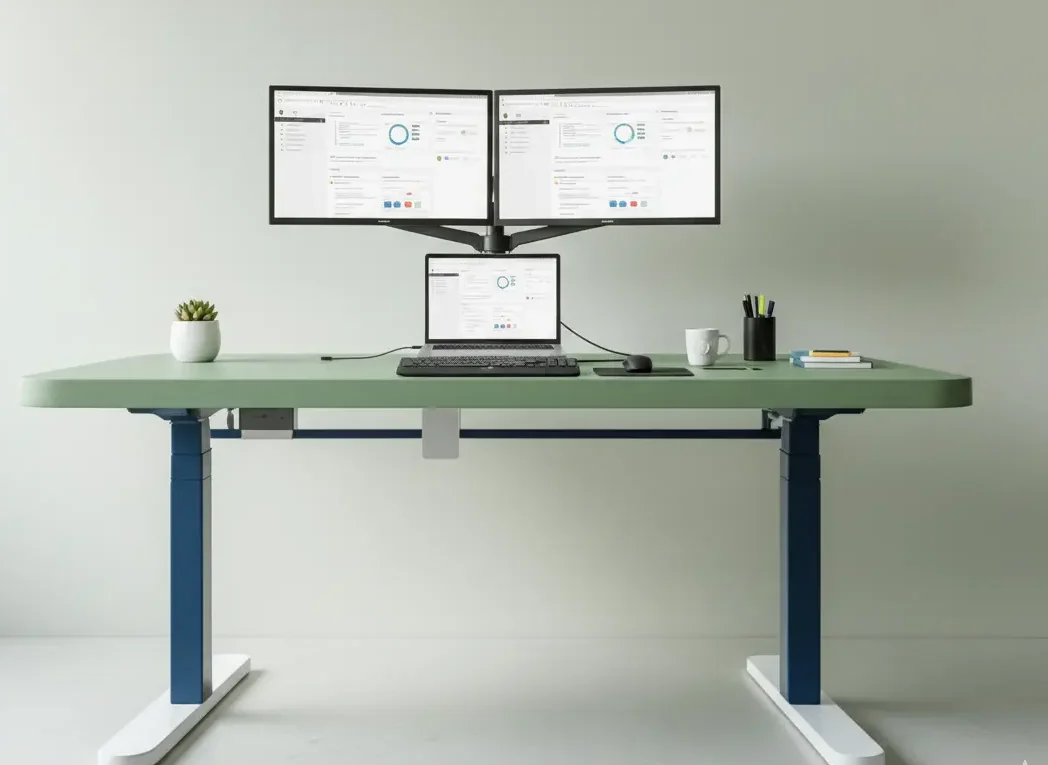
Weekly Check-ups That Actually Matter
I’ll be honest—I used to think “weekly maintenance” meant remembering to dust occasionally. Then I had to pay $200 for a repair that could have been prevented with literally five minutes of attention per week.
The Screw Check (Yes, Really)
This sounds super basic, but vibration loosens screws. It just does. My desk started wobbling after about eight months, and I was convinced something major was wrong. Nope—just loose screws.
Now every Sunday (I tied it to my weekly laundry routine so I’d remember), I spend maybe five minutes checking that everything’s tight. I use this little screwdriver set I got at the hardware store for like $8. Nothing fancy, just basic maintenance.
The legs, the motor mounts, the desktop attachments—all of it gets a quick check. If something feels loose, I tighten it. If it’s already tight, I leave it alone. Simple.
The Movement Test
Here’s something I never thought about until it was too late—desks need to move regularly to stay healthy. Kind of like us, actually. If you let yours sit at one height for weeks, things can get sticky.
Every week, I run mine through its full range. All the way down, all the way up, then back to my preferred sitting height. Takes maybe 30 seconds, but it keeps everything moving smoothly.
I also listen while it’s moving. You get familiar with how your desk sounds when it’s happy. Any new noises, grinding, or hesitation gets investigated immediately. Learned that lesson the expensive way.
Cable Management Reality Check
Look, I know cable management isn’t the most exciting topic, but tangled cables can literally break your desk. I’ve seen it happen.
About six months ago, my neighbor’s desk cable got caught in the lifting mechanism. It yanked the power cord right out of the control box and fried something important. That was a $150 repair that could have been prevented by just tucking the cable properly.
My system now is super simple: all cables get routed through those adhesive clips (they sell them everywhere for like $3), and I leave plenty of slack for movement. When the desk goes up and down, nothing should get pulled or stretched.
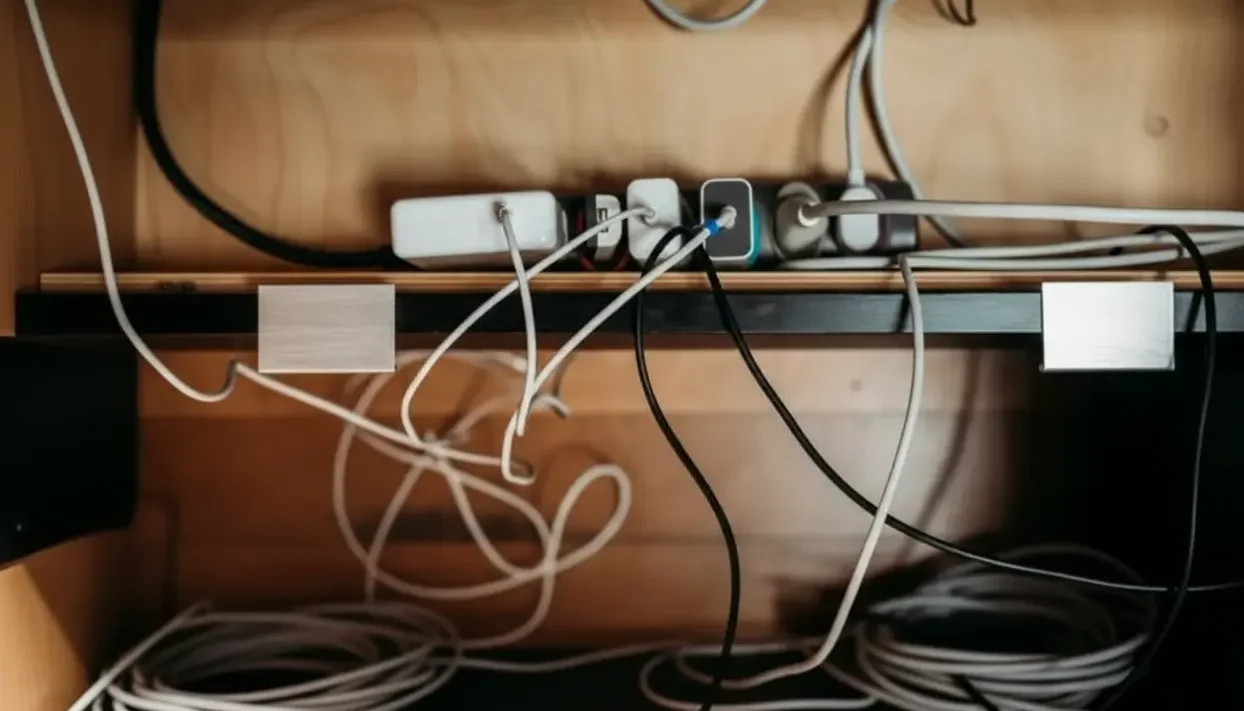
When Things Go Wrong (And They Will)
Let me tell you about the Great Desk Crisis of last March. I came into my office, hit the “up” button for my morning standing session, and… nothing. Not a sound, not a movement, nothing.
Panic mode: activated.
But before you start googling “desk repair near me” like I did, try these things first. They’ve saved me multiple service calls and probably hundreds of dollars.
The “It’s Probably Something Simple” Checklist
First things first—is it plugged in? I know, I know, but my desk “broke” once because my cat had knocked the power cord loose behind my filing cabinet. Spent an hour troubleshooting before I thought to check the basics.
Is something too heavy? Remove everything from your desk. And I mean everything. Then try the controls. If it works, you’ve been overloading it. Add things back gradually until you find your limit.
What’s under there? I once spent two hours convinced my motor was dying, only to discover I’d pushed my printer cart too far under the desk and it was blocking movement. Check under there!
The Magic Reset Button
Most electric desks have some version of a reset procedure, and it fixes about 80% of the problems I’ve encountered. Here’s the general process (but definitely check your manual first):
- Unplug everything for at least 30 seconds
- Plug it back in
- Hold the “down” button until the desk reaches its lowest point
- Keep holding for another few seconds until you hear a beep or see a light
This recalibrates the system and often fixes issues you didn’t even know you had. I do this monthly now, just because it’s so effective.
When the Display Shows Weird Codes
Those error codes look scary, but they’re actually pretty helpful once you know what they mean. Most of the ones I’ve seen fall into two categories:
E01-E04 type codes: Usually calibration issues. The reset procedure I mentioned above fixes these probably 90% of the time.
E07-E08 codes: These typically mean hardware problems. I’ve only seen these twice, and both times required professional help.
The key is not to panic. Write down the exact code, try the reset procedure, and if that doesn’t work, then contact support. Having the error code makes their job much easier.
Prevention is Way Better Than Panic
After three years of learning things the hard way, I’ve figured out that preventing problems is so much easier (and cheaper) than fixing them.
Environment Matters More Than You Think
I used to have my desk right next to a heating vent. Seemed fine until summer hit and the air conditioning was blowing directly on the control panel. The temperature changes were messing with the electronics.
Now my desk is in a spot with more stable temperature, away from direct sunlight, and not too close to heating/cooling vents. Sounds picky, but it’s made a real difference in reliability.
Use It or Lose It
Here’s something counterintuitive—letting your desk sit unused for long periods can actually cause problems. Seals can dry out, mechanisms can get sticky, and motors can develop issues from lack of use.
I make sure to adjust mine at least 2-3 times a day, even if I don’t really need to change positions. It keeps everything moving and lets me notice any developing issues early.
The Weight Distribution Thing
This took me forever to figure out, but how you arrange stuff on your desk matters almost as much as how much stuff you have.
I used to pile everything on one side—my monitors, my printer, all my books. The desk worked, but one side was clearly working harder than the other. Now I try to balance things out, and the movement is noticeably smoother.
My Current Maintenance Schedule
Every day: Quick visual check while I’m getting my coffee. Anything look weird? Cables tangled? Stuff where it shouldn’t be?
Weekly: The screw check, movement test, and cable organization. Maybe 10 minutes total while I’m listening to a podcast.
Monthly: Reset procedure, deeper cleaning, and a more thorough inspection. This is when I actually move everything off the desk and really look at how it’s performing.
Quarterly: This is when I consider whether anything needs professional attention. Any ongoing issues, unusual wear patterns, or performance changes get evaluated.
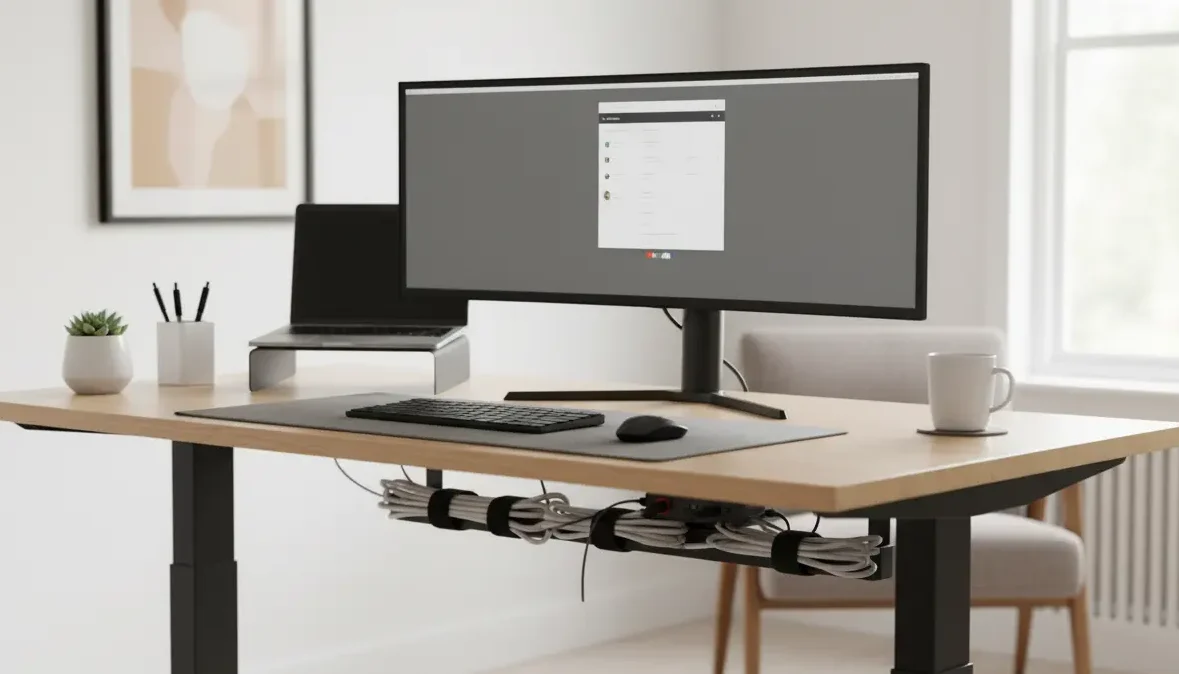
The Bottom Line on Desk Care
Look, I’m not going to pretend that maintaining your desk is the most exciting part of having a home office. But here’s what I’ve learned: a few minutes of attention now saves hours of frustration and potentially hundreds of dollars later.
My desk has been rock-solid reliable for over a year now, ever since I started actually taking care of it. No weird noises, no random failures, no emergency repair calls. It just works, every day, exactly like it’s supposed to.
The key is building these habits gradually. Don’t try to become a maintenance expert overnight. Start with the basics—keep it clean, don’t overload it, and pay attention to how it sounds and feels when it’s operating normally.
When something seems off, address it quickly. Most problems start small and get expensive when you ignore them. Trust me on this one—I’ve been there.
What’s your desk telling you right now? Is it moving smoothly? Sounding healthy? If not, maybe it’s time to show it a little love. Your future self (and your wallet) will definitely thank you.

